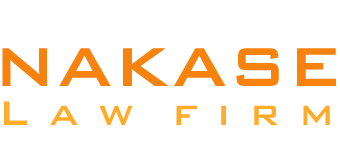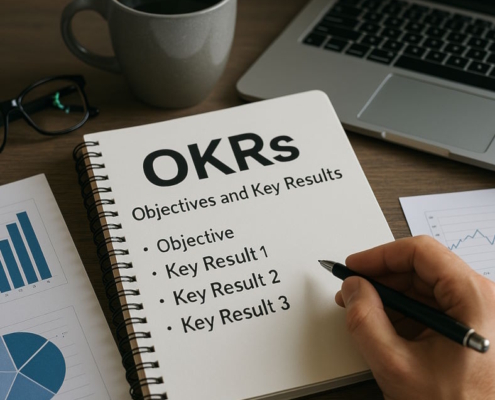Introduction
If you’re a business owner, the meaning behind your company name is really very significant. You probably spent a great deal of time brainstorming names for your company. You must follow the trademarking procedures to make sure your name is protected in order to preserve your proprietary rights and shield your company from liability.
The meaning of a trademark as well as the advantages of registering your company as a trademark will be covered in this post. This guide will also help you understand how to trademark a name effectively.
Make sure your digital branding is consistent by checking the availability of domain names before beginning the trademarking procedure.
A trademark: What is it?
A trademark is any legally protected word, phrase, symbol, design, or mix of these that serves as a representation of a company or brand. When an entity trademarks its name, it grants the owner the only right to use the mark in relation to the products or services they sell. How to trademark a name involves understanding these protections and ensuring others cannot use a name similar to yours in your sector. It also makes other companies in your sector less likely to use an identical name or even the one that is close.
It is important to remember that filing a trademark via the USPTO grants more robust, national rights than an ordinary trademark, which is limited to your region.
The advantages of registering a trademark for your company name
A few noteworthy advantages of trademarking a company name are as follows:
- Have exclusive rights: If you are the owner of the rights to a name, you may regulate who can use it or initiate legal action against anyone who uses it improperly. As a result, no one else may use the identical or related name for comparable services or products without your consent.
- Draw in investors: A trademark may lend credibility to your company when you’re just starting out and wish to raise money. Developing a distinctive, trustworthy brand and taking precautions to safeguard it are qualities that investors find appealing. Apart from shielding companies from lawsuits that might swiftly deplete their finances, trademarking an identity also makes it simpler to franchise and license your company, which tells financiers that there are prospects for growth.
Additionally, it demonstrates to them that you are a respectable business partner and that you are sincere about this endeavor. Knowing how to trademark a name can protect your brand and demonstrate its growth potential.
- Strengthen your company’s reputation: By establishing your brand identity through its name and appearance, a trademark serves to make your brand clearly recognizable. For this reason, it is helpful to incorporate the logotype in your trademark registration. A logotype is a kind of logo that has a brand name in stylized typography. Just by looking at the names of well-known companies like Ikea and Coca-Cola, you probably see their recognizable fonts and color schemes.
- Increase your company’s reach: Having registered trademarks might help you enter new markets as your company grows. While setting yourself apart from the competitors, you can prevent brand infringement.
- Prevent legal action against your company: The main advantage of registering a trademark is that it gives your company and its name legal protection. If someone attempts to utilize it, you have the right to sue them. Another company that has a highly comparable name to yours may file a lawsuit against you if you fail to trademark it.
The process of trademarking a company name in the United States
The USPTO (United States Patent and Trademark Office) requires that you follow seven steps, which we will outline here. To prevent mistakes that could delay the approval process, carefully read these guidelines before beginning your application.
- Examine whether a trademark is actually necessary for your company.
The process of trademarking a name takes time and effort. The procedure typically takes 12 to 18 months, according to the USPTO. Before learning how to trademark a name, decide if it’s essential for your business.
It’s possible to deprioritize registering a trademark on your cluttered to-do list if you don’t have much money or don’t plan to grow your company outside of your immediate neighborhood.
- Browse the database of trademarks.
Use the USPTO Electronic Search Tool to see if the name you wish to trademark is available. All U.S. registered & pending trademarks are included in this database. And you’ll have to start over if your name appears on the list. Learning how to trademark a name means avoiding conflicts with existing trademarks.
Look for names that are similar to your selected business name if it is not available in the TESS database. You can check to see whether another company has a name that is similar to yours by using a spelling variation or phrases that are similar. Your trademark could get denied if you discover a company in your sector using a name that is too similar. If you attempted to trademark the brand name “Mack Donald’s,” for instance, the USPTO could reject your application because it is too similar to the already-existing “McDonald’s” patent.
- Check if your company name qualifies for a trademark.
The name you wish to trademark might remain ineligible even if it is not included in the USPTO directory. The presence of a comparable business name trademark is just one of the many requirements set forth by the USPTO for trademark registration. For instance, the name cannot be too general, dishonest, or immoral. We’ll go over more factors later in the article that can render your company name unsuitable for a trademark. You can better understand your possibilities by speaking with a trademark lawyer if you are unclear whether your company name qualifies for a trademark.
- Ascertain the kind of trademark you require.
The procedure of registering a trademark involves two sorts of trademarks: a unique type of mark and a conventional character mark. Your filing needs will be determined by the format type you select. A typical character mark is a normal trademark comprising a name in simply written form, frequently called a “word mark.” Regardless of the way your business name is displayed stylistically, it is protected, making it the most versatile method of trademarking your name.
You can obtain protection for a mark that uses particular design elements, including typefaces, colors, or other designs, by using a special form mark, sometimes known as a “design mark.” For instance, the brand’s circular emblem and term “Pepsi” would be regarded as unique form marks. This kind of mark has the advantage of protecting both the design and the text.
- Select the relevant trademark classification
In order to classify various services and products for trademark registration reasons, trademark classifications—also known as classes—are utilized. There are forty-four types of commodities and eleven classes of services recognized by the USPTO. In order to ascertain whether there exist any contradictory trademarks within the same class, the trademark examiner uses this classification technique.
For a trademark application, it is crucial to select the appropriate class (or rather, classes, if your company is eligible for greater than one), since the USPTO will not let you alter the classification after the paperwork has been filed. If you select the incorrect class, the registration of your trademark can be denied or your products or services might not be sufficiently protected.
Furthermore, the degree of protection is determined by the classes you choose for your trademark application. Consequently, if the trademarked name is used in a context unrelated to its classification, it may not be covered. Suppose the beauty chain Ulta decided to host a music festival every year. They may not be permitted to use the name “Ulta Music Festival” for the event because “Ultra Music Festival” is already a trademark.
It’s important to remember that the class and classes you choose in the trademark application will determine how much protection your trademark will have. This implies that your trademark may not receive protection if it is used in a way that is not within the parameters of the chosen classes. As an illustration, suppose Ulta Beauty, a chain of beauty stores, wishes to organize an occasion known as the “Ulta Music Festival.”
Despite being registered under the retailing services class, the corporation holds the trademark for “Ulta.” Because it is so similar to the “Ultra Music Festival” brand, which is registered under the entertainment-related services class, it might not be permitted to use its chosen name.
This is not to suggest that you should register your name as a trademark in numerous categories. There is an extra $250 charge for each class you choose on your application. Consequently, the cost of registering a trademark across several classes might be high.
- Establish the grounds for your filing.
You must choose the filing basis for your application when registering a name. A filing basis outlines the foundation on which you are asserting name ownership and validates your entitlement to file the trademark. You can select from four filing bases provided by the trademark application:
- Commercial usage: Your name is presently being used on publicly accessible products and services.
- Intention for use: While your name is not being used yet, you can show that you plan to utilize it soon on services or products.
- Foreign registration: If you are a foreigner submitting a trademark application to the USPTO, it means that your mark is already being used for the same products and services in another nation.
- Foreign application: You are submitting a trademark application in the United States six months after submitting one in a foreign nation, allowing both to be authorized in a comparable amount of time.
The trademark registration’s effective date is determined by the rationale for filing. Proof of usage or registration is required for foreign applications, foreign registration, and use in trade. Intent-to-use, however, enables you to save the trademark for future use.
- Select the application that best suits your needs.
Once you gather all the information needed to file your application, you may start the trademark application process. This online filing system, known as the TEAS (Trademark Electronic Application System), requires that you create an account on the USPTO website.
Since trademarking the name can be a time-consuming process, the USPTO provides a simplified version of their normal application. For companies that can confidently respond to all of the relevant inquiries, there is a TEAS Plus registration option.
In addition to increasing the possibility that your request will be processed more rapidly, selecting this option lowers the filing price from 350 dollars to 250 dollars per class of services or goods. You are required to pay the additional $100 and the submission will be switched to the TEAS Standard request if it does not meet all the requirements.
After submitting your application, you will receive a validation and an identification number that you may use to track its progress. It will be examined by a government patent lawyer who will decide whether to authorize your company’s trademark. After submitting your application, don’t panic if you receive no response right away because this step of the procedure can take several months.
What to anticipate following your filing?
You will have a chance to reply to office proceedings and revise your application if the investigating attorney has any concerns or questions about it. Note: the procedure may take a bit longer as a result.
Following approval of your original application, the USPTO will release the name you have trademarked in the Public Gazette, a publication (weekly) that announces new trademarks. A third party has 30 days to challenge your trademark. The USPTO will grant the trademark to your name if they don’t get a legitimate complaint.
In spite of this, remember that you should continue to uphold your grades after they are awarded. Ten years are allotted for trademark registrations (federal). By routinely submitting maintenance paperwork and spending maintenance costs, you can, however, maintain your trademark valid. Since trademarks that haven’t been utilized for a long time may be canceled and abandoned, you will also need to show that you’re consistently using your registration.
Notably, you are responsible for enforcing your trademark after it becomes active. In the case of infringement, businesses have the legal right and justification to take legal recourse through organizations like the USPTO, but they won’t act on the client’s behalf.
Understanding how to trademark a name also involves knowing your rights. It’s also critical to understand that, once you have trademarked your business name, you will need to complete a separate registration process.
Four typical reasons why trademarks are denied
Let us talk about some typical trademark application problems and how to stop them. (The United States Patent Office’s application checklist has a comprehensive list of issues that can result in a rejection.) If your application is denied, you have two options: submit a new trademark request or appeal to the Trademark Trial & Appeal Board.
- Your trademark resembles an already-existing one. The USPTO is likely to reject your application if your trademark is identical or similar to an already-existing trademark or business name. If you attempt to trademark the brand name “Wall Mart,” for instance, the USPTO is likely to deny your application because it is too close to the trademark registration “Walmart.” The USPTO can reject a trademark if it is probable to mislead consumers, even if it is for a company in a different field.
- The description of your name is not accurate. If the requested mark is found to deceive consumers regarding a feature or quality of the goods or services that you provide, the USPTO can reject your application. For instance, if your name contains the word “organic,” but your items aren’t, the USPTO can view it as misleading or misrepresentative.
Since it would unfairly harm other companies, the USPTO might reject your request if you are attempting to trademark an umbrella descriptive term. For instance, your application might be rejected by the USPTO if you sought to call your drinks company “Juicy.”
To steer clear of either situation, make sure the name you wish to trademark is unique, correct, and doesn’t use a lot of descriptive words. Use any online company name generator or research the most successful company names to come up with a name that is distinctive and pertinent to your enterprise.
- You use your surname as a trademark. If the trademark includes a last name that cannot be used for anything other than identifying a person or family, the USPTO may deny your registration. So, if I wanted to trademark my last name, “Shwake,” they would probably reject my application. They might, however, accept my request if my last name is already connected to the goods or services I offer.
- Ornamental. Your trademark application is likely to be denied if it is solely ornamental, such as a design that uses words or a symbol on apparel instead of your company name. The trademark cannot be only ornamental; it must indicate a brand or company and have a purpose.
By following these guidelines, you can confidently navigate how to trademark a name and protect your business identity.






























